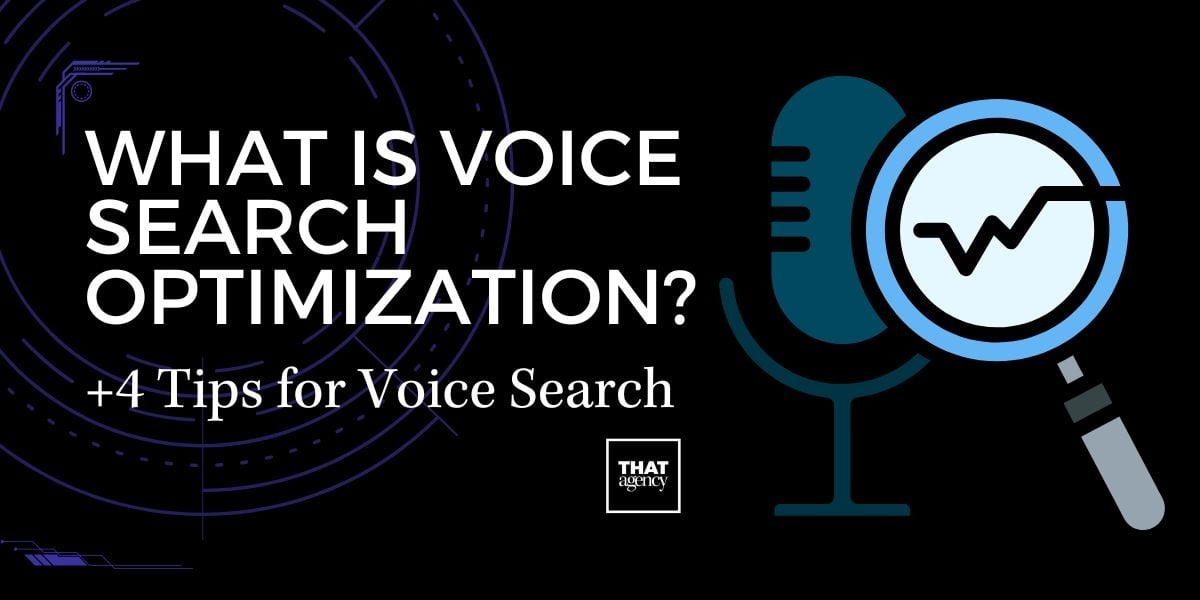Managing social media for franchises can feel like juggling flaming torches, especially when you’re trying to keep multiple locations aligned, active, and engaging online. But here’s the good news: with the right strategy and a little help from digital experts, you can turn your franchise’s social media presence into a powerful tool that connects with local audiences while supporting your national brand.
Whether you’re a marketing director of a growing restaurant chain, a regional dealership manager, or a CEO trying to make sense of your brand’s social presence, this guide will walk you through how to build social media engagement across all your franchise locations.
Let’s dive into how to make social media for franchises easier, smarter, and way more effective.
Let’s be real, your customers are spending a lot of time on social media. But they’re not just watching cat videos or scrolling for fun. Many people now turn to platforms like Instagram, Facebook, and TikTok to:
For franchise businesses, this means social media is more than just a marketing tool, it’s part of the customer experience. Whether someone’s checking out your latest deals or just looking up your location, social media helps shape how they view your brand.
Unlike a single-location business, a franchise may have dozens or even hundreds of individual locations, all serving different communities. That’s a lot of voices, pages, and content to manage.
Without a plan, things can get messy, fast. One location might post every day, while another stays silent for weeks. Some stores may stick to brand guidelines, and others might go off-track. This can confuse customers and make your brand look disorganized.
Having a clear strategy for social media helps you:
In other words, a smart social media approach helps your franchise grow stronger, both locally and nationally.
Can’t we just post from one corporate account? You can, but that limits your ability to reach people at the local level. Local pages perform better when it comes to showing up in search results, building community trust, and engaging with nearby customers. A mix of corporate and local content is usually the best approach.
Do customers really care about social media? Yes. People often check social media to see if a business is active, trustworthy, and responsive. An outdated or inactive page can send the wrong message. On the flip side, a well-managed page with helpful info, reviews, and engaging content builds confidence.
Isn’t it too much work to manage pages for every location? It can be if you try to do everything manually. But with the right tools and strategy, you can streamline the process and keep every page on track without overwhelming your team.
What kind of content works best for franchise social media? The best content is usually a mix of branded materials (like promotions or product announcements) and local content (like community events, team highlights, or behind-the-scenes moments). This keeps things professional, but still personal and relatable.
If your franchise isn’t active on social media, or if your locations are all doing their own thing, it’s time to rethink your approach. Social media can help you build stronger connections, boost your visibility, and create a better experience for customers across every location.
But to make it work, you need a plan. A strong social media strategy brings order to the chaos, helping every location show up and shine in a way that supports your overall brand.
Before we talk solutions, let’s look at what makes managing social media for franchises tricky:
Sound familiar? If so, you’re not alone. The good news is that these problems are fixable with a solid foundation and the right tools.
When it comes to building a strong social media presence across multiple franchise locations, everything starts with a clear strategy. Without one, it’s easy for each location to go in a different direction, which can confuse your audience and hurt your brand image.
That’s why your first step should be creating a franchise-wide social media strategy that gives every location the tools and direction they need to stay aligned. This isn’t just about rules. It’s about giving each location a roadmap they can confidently follow while still adding their own local touch.
Think of this strategy as your official playbook. It helps everyone, from corporate teams to local managers, understand how to represent the brand on social media.
Here are the key parts to include:
Without a unified strategy, things can get inconsistent fast. One location might be super active, while another posts once every few months. Some might use outdated logos or off-brand language. Over time, this chips away at customer trust and brand recognition.
A shared strategy helps you:
What if my franchisees want creative freedom? They can still be creative, just within some clear guidelines. A strong strategy provides structure, not restrictions. Encourage each location to share local content, but make sure they’re doing it in a way that reflects the brand as a whole.
Do I need to update the strategy regularly? Yes. Social media trends change, and your business goals might shift too. It’s a good idea to review your strategy every 6–12 months to make sure it still fits your needs.
What’s the best way to share this strategy with all locations? Create a shared digital folder (using Google Drive or Dropbox) or an internal resource hub. You can also host virtual training sessions or record walkthrough videos so everyone understands how to use the strategy.
If you want your franchise locations to succeed on social media, you need to give them a solid foundation. A clear, easy-to-follow strategy acts as the backbone of your social media efforts. It keeps your brand consistent, your teams aligned, and your content working together toward shared goals.
Once that playbook is in place, your franchise is ready to move forward with confidence, one post at a time.
Trying to manage dozens, or even hundreds, of social media accounts by hand is a recipe for stress. It’s time-consuming, confusing, and easy to get overwhelmed. That’s where social media management tools come in.
For franchises, these tools are not just helpful, they’re essential. They allow you to keep things organized, save time, and make sure every location stays on track.
Social media management tools are platforms designed to help businesses schedule, publish, and monitor content across different channels. For franchises, these tools are especially useful because they let you manage multiple accounts from one central dashboard.
Some of the most popular tools used by franchises include:
Each one offers a slightly different set of features, but most include everything you need to keep your social media efforts running smoothly.
Here are just a few of the things you can manage more easily when using social media tools:
Without a central system, it’s easy for things to fall apart. Posts get missed, branding becomes inconsistent, and team members feel unsure about what to do.
By using a social media management platform, you can:
Think of these tools as the engine that keeps your social media strategy running smoothly. They take the pressure off your teams and give you a clearer picture of how your brand is showing up online.
Do we really need a tool if we only have a few locations? Even with just a handful of locations, using a management tool helps you stay organized and consistent. As your franchise grows, you’ll already have a system in place to handle more pages without extra stress.
Are these tools hard to learn? Most social media platforms are designed to be user-friendly. Plus, many offer tutorials, customer support, and onboarding services. Once your team gets the hang of it, using the tools will actually make their jobs easier.
How do we choose the right platform? Look for features that match your needs. If you need strict brand control, choose a platform with approval workflows. If visual planning is important, pick a tool with a calendar view. You can also try free trials to see which one fits best.
Can local managers still add their own posts? Yes! Most tools let you give local teams access to their specific accounts while still following the overall strategy. You can allow them to post independently or require approval before posts go live, it’s up to you.
Social media for franchises doesn’t have to be chaotic. The right tools help you stay organized, consistent, and efficient, without micromanaging every single post.
They also strike a balance: giving the corporate team visibility and control, while giving local managers the power to connect with their communities in real and meaningful ways.
Up next, we’ll talk about how to strike that balance even better, by combining centralized leadership with local flexibility. Let me know if you'd like that section expanded too.
One of the best things about running a franchise is that you have both a strong, established brand and a group of local teams who know their communities inside and out. The challenge is finding the right balance between consistency and creativity.
You don’t want every location posting completely different content, but you also don’t want everything to feel so corporate that it loses its local charm. This step is all about making sure your brand stays unified while still letting each location connect with their audience in a personal way.
Social media is about building relationships. People follow brands not just for promotions, but because they feel a connection. That connection is strongest when the content feels real and relatable. For franchises, this means finding a way to mix corporate direction with local personality.
When you get it right, your brand comes across as:
It’s the kind of experience that makes people want to visit your business, and tell others about it too.
The corporate marketing team should lead the way by giving every franchise location the tools and content they need to succeed. This creates a consistent foundation that makes each location’s job easier.
Here are some of the key roles corporate can play:
What Should the Local Franchise Teams Do?
Once the foundation is set, local teams can build on it. They have the advantage of knowing their customers and communities better than anyone else. That’s a big deal, and it should come through in the content they share.
Here are a few examples of what local teams can post:
Let’s say you run a fast-casual restaurant franchise. Here’s how this balance might look in action:
Same campaign, same message, different, localized experience. That’s what makes the franchise model work so well on social media.
How much control should corporate have over local pages? That depends on your brand. Some companies prefer strict control, where corporate approves everything. Others give more freedom. A good middle ground is to let local teams post within certain guidelines and have corporate oversee major campaigns or high-visibility content.
What if a local team isn’t following the strategy? Regular training, clear communication, and easy-to-use resources can help. If a location still struggles, it may be best to offer more direct support or require approval for their posts until they’re back on track.
Can we use the same content across all locations? You can, especially for national campaigns or evergreen posts. But try to avoid posting the exact same thing at the exact same time on every page. Mix it up by encouraging local teams to personalize the caption or add a unique photo.
Balancing centralized control with local flexibility is where franchises really shine on social media. Corporate keeps everything consistent and on-brand, while local teams bring heart, personality, and real community engagement.
When your strategy supports both sides, everyone wins. The brand looks strong and unified, customers feel a genuine connection, and each location gets a chance to stand out in its own way.
Want help putting the right systems in place to support this balance? THAT Agency can guide you through building a social media strategy that works at every level.
A lot of businesses make the same mistake on social media: they treat it like a bulletin board. They post an update, promotion, or announcement, and then walk away.
But here’s the thing: social media isn’t just a place to make announcements. It’s a place to start conversations. That’s especially important for franchises trying to connect with different local communities. If you’re only posting content but not interacting with your followers, you’re missing out on the most valuable part of social media, engagement.
When people comment on your posts, tag their friends, or share your content, they’re doing more than interacting, they’re helping you grow your reach.
Here’s why engagement matters:
And unlike ads or promotions, engagement doesn’t cost anything extra, it just takes a little effort.
You don’t need a huge marketing team or a fancy strategy to start connecting with your audience. Here are some easy and effective ways franchise locations can build engagement every week:
Does engagement really affect our visibility? Yes. Platforms like Instagram and Facebook use engagement as a key factor in deciding who sees your posts. The more people interact with your content, the more likely it is to show up in other users’ feeds or Explore pages.
What if we don’t have time to reply to every comment? You don’t have to respond to every single one, but try to answer the ones that ask questions or provide meaningful feedback. If time is tight, even liking a comment or replying with a short thank you can go a long way.
What if no one’s engaging with our posts? Try switching up your content. Ask more questions, post more photos of your team or community, or test out a small giveaway. Sometimes all it takes is one engaging post to start building momentum.
Should we engage on other pages too? Yes. Social media is about community. Follow local businesses, schools, or nonprofits and leave supportive comments. It shows your brand is involved and helps you reach new audiences.
If you want people to interact with your posts, you have to show up for them too. That means responding to comments, supporting other local accounts, and creating posts that invite conversation, not just promotion.
Encouraging engagement is one of the most important things you can do to grow your franchise’s social media presence. It builds trust, increases your reach, and helps turn followers into loyal customers.
So don’t just post and walk away, start conversations, ask questions, and connect with the people who make your business thrive. That’s what social media was made for.
Let me know if you’d like Step 5 expanded next.
One of the best parts of digital marketing is that it’s not a guessing game. You can actually track what’s working, and what’s not. When you manage social media for franchises, using location-specific insights is key. It helps you see how each store or team is performing and where there’s room for improvement.
Instead of just hoping your posts are doing well, you’ll have real data to back things up.
There are a few important metrics every franchise should keep an eye on. With the help of social media analytics tools (like Sprout Social, Meta’s Business Suite, or Hootsuite), you can break down performance by location and spot trends over time.
Here’s what to track:
Tracking social media performance by location gives you a clearer picture of what’s going on across your franchise. Without this level of detail, it’s easy to assume all your stores are doing the same thing, or getting the same results.
But when you dig into the numbers, you can:
Do we really need to track each location separately? Yes, especially if you want to grow your franchise presence. Each location has its own audience, and what works in one area might not work in another. Tracking performance by location helps you fine-tune your efforts and support each team where they need it most.
What if some locations don’t get much engagement? That’s okay! Use it as a learning opportunity. Review their content, offer some coaching or new ideas, and see if changes help improve performance over time.
How often should we check analytics? Once a month is a good starting point. It gives you enough data to spot trends but isn’t so frequent that you get stuck in the weeds. You can also run a quick check after launching a new campaign to see how it’s performing.
Do we need expensive software to track performance? Not necessarily. Many platforms like Facebook and Instagram have built-in tools that offer helpful insights. But if you’re managing multiple accounts across dozens of locations, a paid tool with multi-location features can definitely make your job easier.
If you want your franchise’s social media strategy to grow and improve, you need to know what’s working, and where to adjust. Tracking performance by location gives you that visibility. It helps you support the teams that need guidance and spotlight the ones that are doing an awesome job.
Data doesn’t have to be complicated. With the right tools and a little time, you can turn insights into action, and keep your brand growing strong across every location.
You can have the best tools, the most detailed strategy, and the strongest brand, but none of that matters if your team doesn’t know how to use them. Training your franchise teams is one of the most important steps in building a successful social media presence across all locations.
Whether your franchisees are brand new to social media or have been managing accounts for years, they still need clear guidance, simple tools, and support they can actually use. Social media changes fast, so ongoing training helps everyone stay confident, creative, and consistent.
Here’s a breakdown of the most important areas to cover in your social media training:
Training doesn’t have to be long or complicated. In fact, the easier it is to access and understand, the more likely your team will actually use it.
Here are some simple and effective ways to roll out training:
What if our franchisees are too busy to attend training? That’s why short, recorded videos and self-serve resources are so helpful. Your team can watch on their own schedule and refer back as needed. Keeping it simple and flexible increases participation.
Do we need to train every new employee? You don’t have to train everyone, but anyone who has access to your social media pages should understand the basics. It’s a good idea to include social media training in your onboarding process for managers or marketing roles.
What if a team keeps breaking the rules? Sometimes it’s a matter of not knowing better. Start with extra support and guidance. If it continues, you may need to limit posting access until they’re back on track. Consistent training can prevent most issues from happening in the first place.
How often should we update our training materials? Aim to review and refresh your content at least once or twice a year, or sooner if there’s a major platform update or branding change. Social media moves fast, and your training should keep up.
Franchise social media success depends on people, not just platforms. If you want your strategy to work, your teams need to feel confident and supported.
Training gives your franchisees the knowledge they need to post effectively, engage with followers, and represent the brand well. And when your team feels prepared, they’re more likely to participate, and more likely to succeed.
User-generated content (UGC) is one of the most powerful and cost-effective ways to boost your social media presence, especially for franchises. What makes it so valuable? It’s authentic. It comes straight from your customers, and it shows real people enjoying what your business offers.
When someone posts a picture or leaves a review about your franchise, they’re doing more than just sharing their experience, they’re endorsing your brand. And that kind of trust can’t be bought.
User-generated content includes:
Most customers are happy to share their experience, you just need to invite them to do it. Here are some easy ways to get more user-generated content:
Just make sure you get permission before reposting someone else’s content, and always give them a shoutout when you do.
User-generated content helps you:
What if customers don’t post often? Start small. Ask happy customers in person or in DMs if they’d be willing to tag you or leave a review. You can also highlight UGC from one location to encourage others to join in.
Can we offer incentives for UGC? Yes, but keep it simple. A chance to win a gift card, get featured on your page, or receive a small freebie can motivate people without feeling pushy.
What if someone tags us in a negative post? Don’t panic. Use it as a chance to respond professionally and make things right. Sometimes, turning a bad experience around can win over both the customer and anyone watching.
Franchises often focus on national marketing campaigns, but don’t overlook the power of local voices. Partnering with local influencers, small business owners, or community leaders is a great way to get your message out and connect with the people who live nearby.
These partnerships bring personality and credibility to your brand, and they’re often much more affordable (and effective) than working with big-name influencers.
Think beyond celebrities. Local influence can come from:
Here are some practical ways to build local partnerships:
These activities boost your visibility and help your franchise feel like part of the local community, not just another chain.
Do we need a big budget for local influencers? Not at all. Many local influencers are happy to promote your business in exchange for free products, exclusive access, or small payments. It’s more about building a relationship than making a big spend.
How do we find the right influencers? Search local hashtags, ask your team who they follow, or look at who your customers tag. Start with people who align with your brand and have an engaged following, even if their audience is small.
What if the influencer’s content doesn’t match our brand? Always vet influencers first. Review their previous posts and make sure they reflect the kind of message you want to share. A quick conversation about expectations can also help things go smoothly.
Trends come and go fast on social media. One week it’s a viral dance on TikTok, and the next it’s a new meme format or audio clip. It’s tempting to jump in on every trend, but not all of them will fit your brand, and that’s okay.
The key is to pick trends that match your message, make sense for your audience, and feel natural for your team to participate in.
When the trend is a good fit, it can give your content a major boost in visibility. Try:
Is it bad to ignore social trends? Not at all. If trends don’t make sense for your brand or audience, it’s okay to skip them. Focus on what works for you.
How do we stay updated on trends? Follow popular creators and industry leaders. You can also check the Explore page or trending tabs on platforms like TikTok and Instagram to see what’s gaining traction.
What if a trend is controversial? Stay away. If there’s any chance the trend could offend or divide your audience, it’s best to steer clear. Keep your content fun, respectful, and on brand.
Steps 7, 8, and 9 are all about connecting with your audience in a meaningful way, by showing real people, building local relationships, and staying current (without losing your voice). Whether you’re sharing a customer’s post, partnering with a local creator, or hopping on a trend, remember to keep it authentic and aligned with your brand.
Want help bringing these strategies to life across your franchise locations? THAT Agency specializes in building social media plans that connect with communities while keeping your brand consistent. Reach out today to learn how we can help.
At this point, you’re probably thinking: “This sounds great, but who’s going to do all this?” That’s where professional social media management comes in.
Working with a digital marketing partner like THAT Agency means you don’t have to do it alone. We help you:
Our team understands the unique challenges of social media for franchises, and we’re here to help you grow your digital presence the right way.
At the end of the day, social media for franchises doesn’t have to be overwhelming. With the right strategy, tools, and team, you can create a consistent, engaging, and scalable presence that works across every location.
It’s not just about looking good online, it’s about building real connections with your customers and communities.
Ready to take your franchise’s social media to the next level? Contact us today to learn more about how our social media management services can help you reach your goals.
Tags: Social Media, social media marketing, B2B, Social Media Trends, B2C

What are Zero Click Searches and How Do They Impact Your Business?

What is Voice Search Optimization? +4 Tips for Voice Search

Leveraging Predictive Analytics Marketing for Smarter Decisions

Consumer Behavior Trends 2026 Every Business Must Factor Into Their Marketing Plan
.jpg)
AI Image Generation for Marketers: What’s Possible and What to Avoid
700 S. Rosemary Ave.
Suite 204-707
West Palm Beach, FL 33401
P: 561.832.6262
F: 561.832.7707

